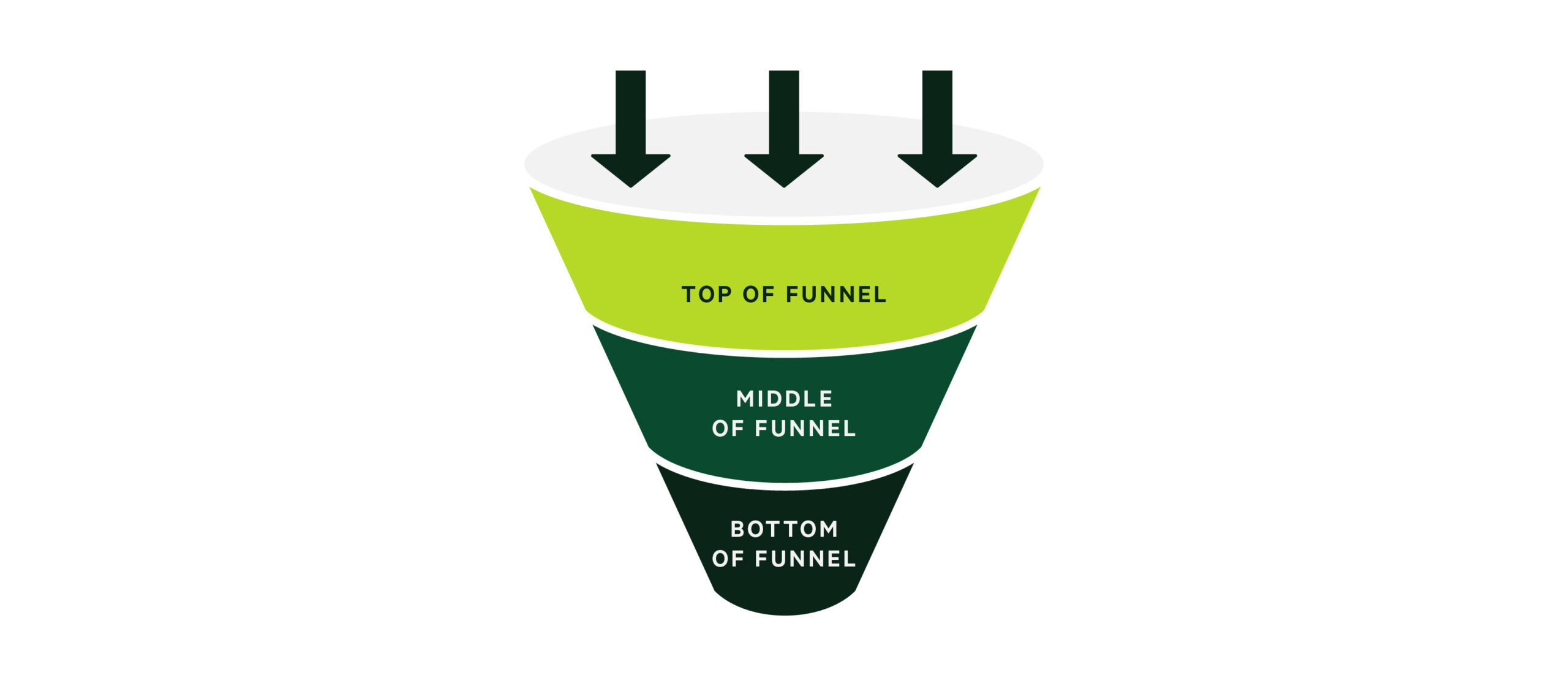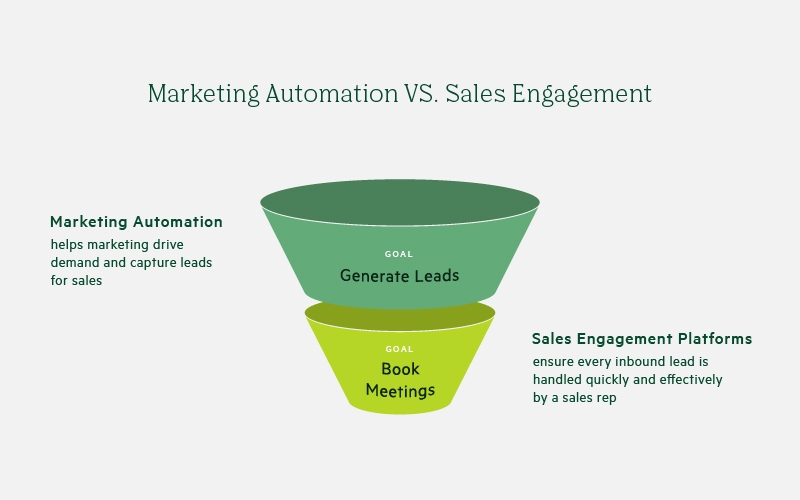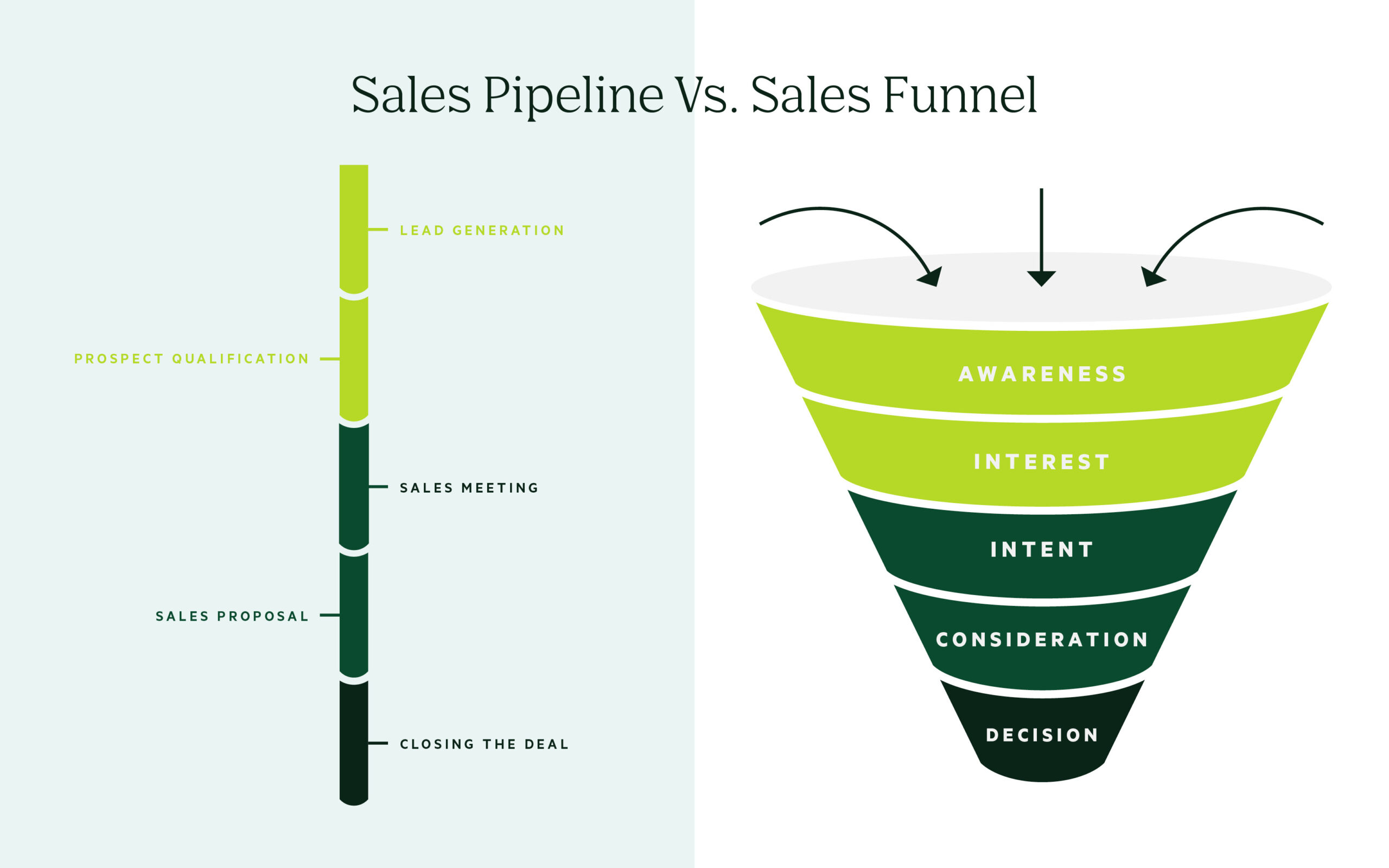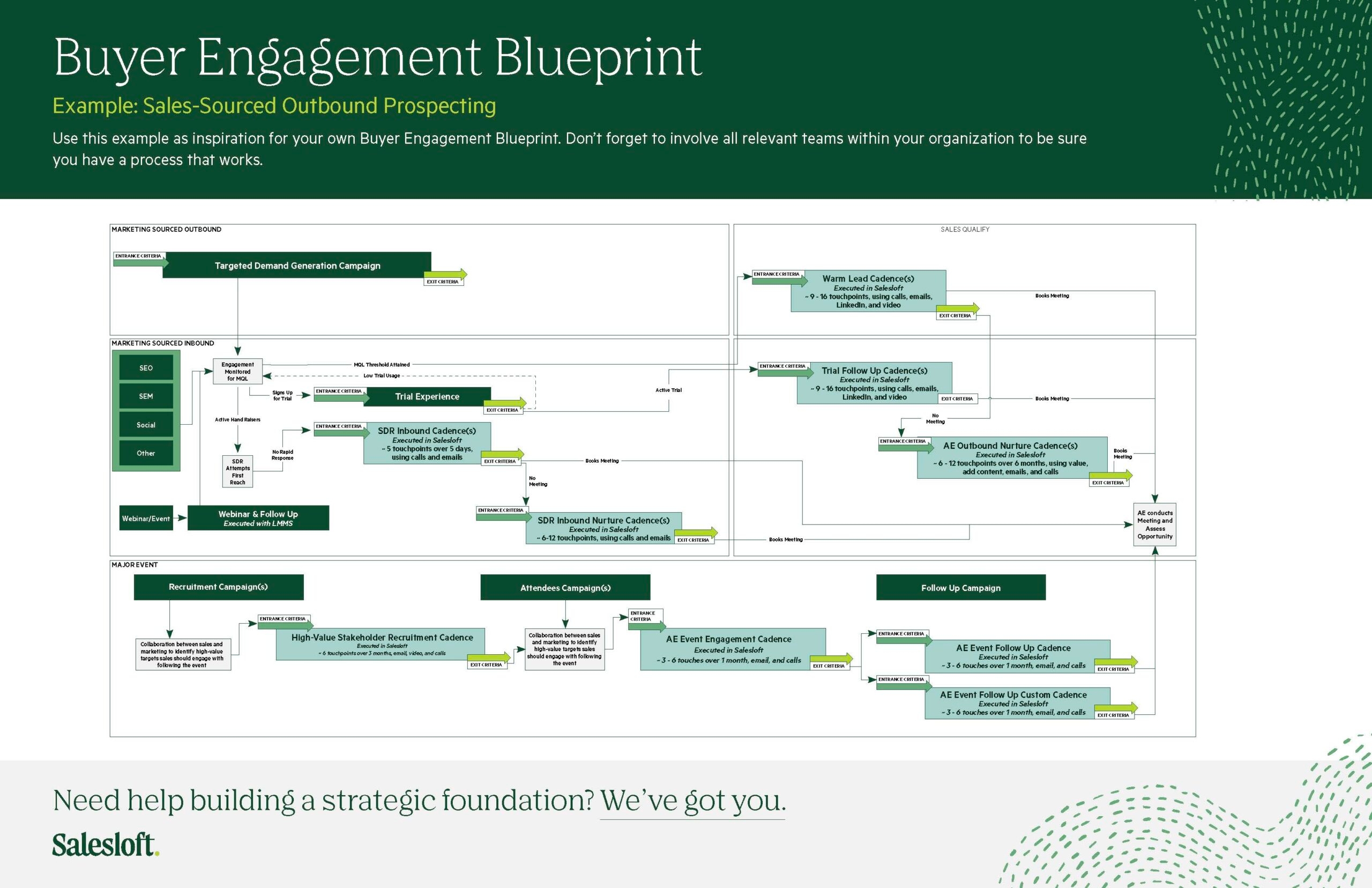The Sales Funnel Defined With Stages and Examples
Published:

What is a Sales Funnel?
A sales funnel is a visual representation of the buyer’s journey and the steps potential customers take to make a purchase.
Sellers use sales funnels to understand the sales process from the buyer’s perspective. It offers insight into interactions, needs, pain points, and other vital data across the buying process.

Today, we’ll review an example of an effective sales funnel, its stages, and how to optimize your funnel with Salesloft’s engagement capabilities.
Stages of a Sales Funnel
Before diving into our example, let’s dress down the different stages of a sales funnel and its functions. A sales funnel model mirrors the buyer’s journey and leads start at the top of the funnel and then move to the bottom, where they leave the funnel.
Top of the Sales Funnel (TOFU)
The top of the funnel visualizes the beginning of the buyer’s journey (aka the awareness stage).
Potential buyers have a problem or question but limited awareness of solutions, products, or services. Marketing efforts such as social media or email marketing campaigns introduce buyers to your business, generating awareness.
Cold calls and cold emails are also a common method of reaching prospective customers directly. (Additional methods include organic traffic from Google search and lead magnet landing pages.)
Organizations utilize marketing automation to scale awareness. Marketing automation provides mass messaging but lacks the human touch often needed to push leads to the next stage. As a result, organizations also utilize Salesloft Cadence for personalized one-to-one communication as a part of marketing efforts.

A well-built cadence puts the right message in front of the right prospects at the right time. It is also an effective way to ensure seamless lead handoffs between marketing and sales.
Middle of the Sales Funnel (MOFU)
The middle of the funnel visualizes the midpoint of the buyer’s journey, also known as the interest stage.
Leads know what solutions are available but require more information. So, they start sleuthing—asking specific questions and conducting additional research. Case studies, testimonials, webinars, and other content on your website serves as trusted sources of information.
Meanwhile, salespeople must determine which leads they should continue to pursue.
This is where a sales qualification framework comes in: Frameworks (such as MEDDIC) allow B2B salespeople to gauge deal strength and avoid poor-fit opportunities. Frameworks also help sellers determine buying criteria and modify the sales process.
During and after the qualification process, reps wield Conversation Intelligence to analyze interactions, capture insights, and scale best practices across the funnel.
Bottom of the Sales Funnel (BOFU)
The bottom of the funnel (aka the decision stage) represents the final stage of the buying process. By this point, you are left with just the very best prospects who are close to a buying decision.
At this stage of the sales funnel, sellers are leading conversations around pricing, onboarding, and handling buyer objections. Online marketing efforts will also pay off here as prospects conduct targeted research. Ranking for longtail SEO keywords related to your products and competitors will position your company well.
In the meantime, sales reps and managers should be in lock step on deal strategy. A sales engagement platform can provide visibility into opportunities, surface deal gaps, and even warn sellers of potential issues.
Sales Funnel vs. Sales Pipeline
The sales funnel represents the buyer’s journey, visualizing how potential customers enter and leave the buying process. Meanwhile, the sales pipeline represents your team’s sales process, defining and tracking how deals progress.
The difference is a matter of perspective: The sales funnel is based on the buyer’s perspective whereas the pipeline is from the rep’s perspective. That said, both deepen your understanding of your target audience and selling activities.

Sales Funnel Example
Let’s review how the sales funnel works with a short example.
- Generate Pipeline (TOFU): Prospecting and various marketing efforts push new leads into the funnel. Salesloft’s multi-channel workflow supports TOFU activities by streamlining the personalization of one-on-one interactions. Live sales coaching and scalable best practices increase conversion rates, help reps schedule more meetings, and generate more pipeline, faster.
- Manage Deals (MOFU): Sales reps are qualifying and nurturing opportunities in the middle of the funnel. Salesloft helps sellers to prioritize opportunities entering their pipeline, recognize potential deal weaknesses, and engage everyone on the buying committee. All the while, sales managers are gaining valuable intel to coach reps on closing the deal.
- Engage Customers (BOFU): Once prospects have made the decision to buy, cadences can ensure communication continues through implementation. All deal data in one place ensures a seamless handoff from account executives (AEs) to customer success, decreasing onboarding time and friction, which paves the way for upselling and cross-selling. You can also leverage data to address retention, churn rates, conversion rates, and more for smarter sales management.
How to Optimize Your Sales Funnel
After building your sales funnel, optimizing it can help move prospects through your sales pipeline more quickly so you can generate revenue faster. Small tweaks, like improving your marketing CTAs and follow-up, can yield big benefits when more qualified leads are moving from the top of the sales funnel to the bottom.
Some causes of an underperforming pipeline include poor CTAs, inadequate follow-up, lackluster buyer incentives, low social proof, and limited insight into new customers. All these examples cause friction, affecting how prospects move through the sales funnel.
By optimizing your sales funnel with the tactics listed below, your sales team can prevent pipeline issues from hurting potential customers.
Map Out the Full Customer Experience
The full customer experience likely includes dozens of touch points from browser to buyer. Mapping your customer journey, aka buyer’s journey, will help you manage these complex moments throughout the customer lifecycle. To map the full customer experience, you will likely need to talk with many teams to understand the role they play. Once you know the role everyone plays, and at what point in the sales funnel, then you can build a current state engagement blueprint with each lead handoff highlighted. Lead handoffs occur when the lead moves from one team to another. For example, when it is passed from marketing to a sales rep. Or at the bottom of the funnel when it is passed from the sales rep to the post-sale team.

Increase Referrals for Lead Generation
A properly optimized sales funnel starts with as many leads as possible and becomes more narrow through each stage. Referrals are a great way to aid lead generation. In fact, referrals generated nearly 40% of leads for companies with formal referral programs.
Why? Because new customers care about the experiences of past buyers. Whether it’s thanks to a positive review or a friend’s recommendation, referred leads are more trusting of your company’s offerings than non-referred leads, which means higher conversion rates.
Replicate the Success of Top Performers
Top performers have a secret sauce. By identifying common behaviors, you can replicate their winning sales strategies and optimize the performance of your whole team. Start by digging into your data. Are top performers calling potential customers at a certain time? What message are they using in emails? How many buyers are they engaging when they win a large deal? The buyer engagement data available in a comprehensive platform can offer incredible insights. With call recording software and sales coaching capabilities, sales managers have everything they need to uplevel their team.
Leverage Your Content Marketing Strategy
Optimize the awareness stage of your sales funnel by taking advantage of your company’s content marketing strategy, which is most commonly leveraged to attract website visitors. The personalized, one-on-one communication that Salesloft offers makes it possible to share just the right content with potential customers at any point in the sales funnel. Sellers can define and scale personalization so every interaction fits your lead’s persona or intent.
Provide the Sales Team With Data and Next Best Actions
Optimizing your sales funnel is easy with the help of AI and machine learning. Learn which prospects are the best fit, assess why leads are disqualified after certain steps, and identify your most effective channels. With this information right within your Salesloft workflow, sellers can take the next best action.
For example, if too many days go by without communication from a prospect, the deal engagement score will drop and a seller can reach out right from the notification. A weekly email summary for sales leaders offers insight into the progress the team made last week, including the sales rep that was most efficient per opportunity and per meeting.
Get the Most Out of Your Sales Funnel With Salesloft
Your sales funnel is most effective when it mirrors the buying process.
Salesloft’s sales engagement platform helps at every stage of the sales funnel. Through an automated workflow, multi-channel communication, and comprehensive deal tracking, sellers gain the oversight they need to personalize and scale interactions.
Learn more and optimize your sales funnel by booking a demo today.





























